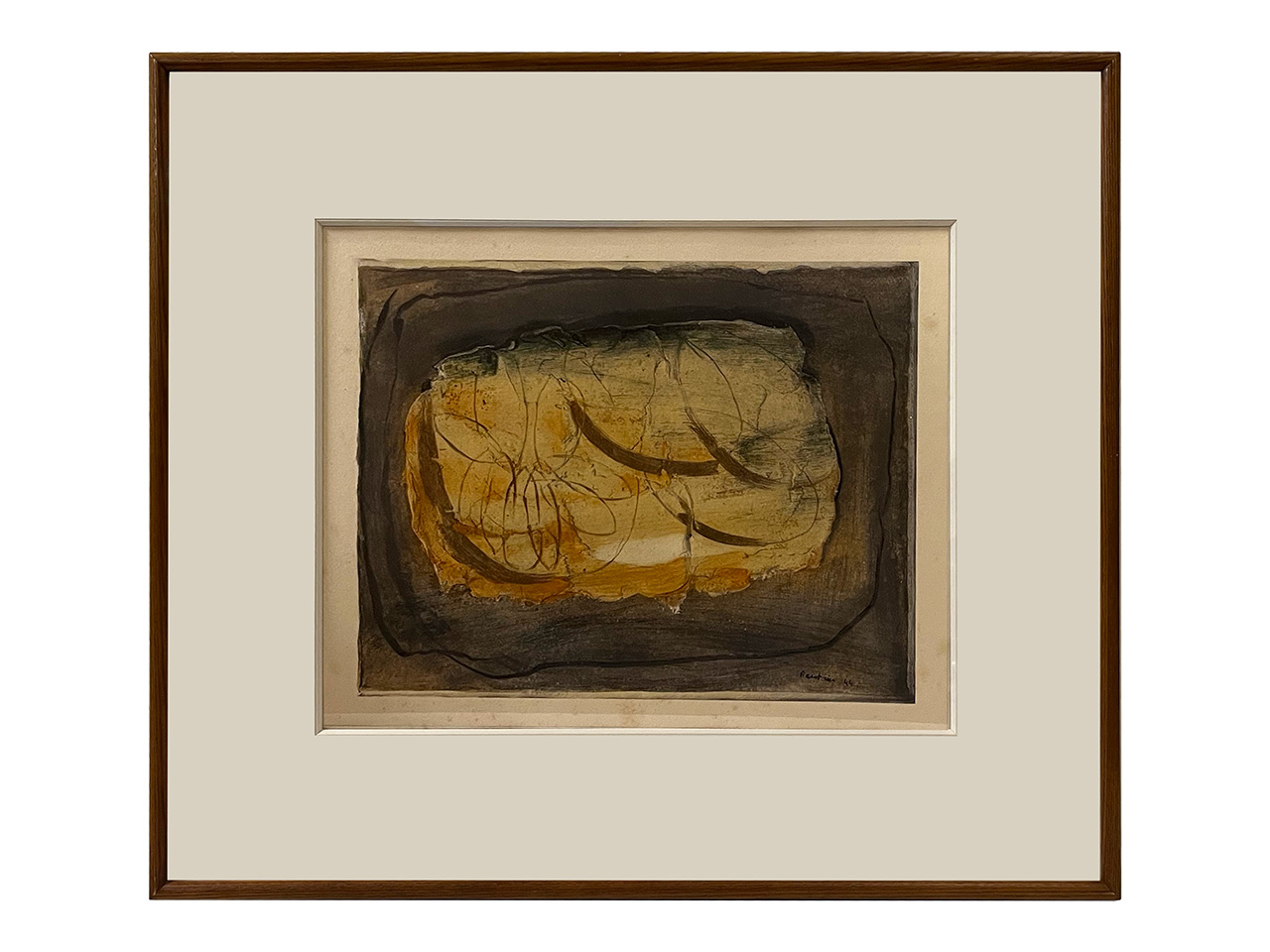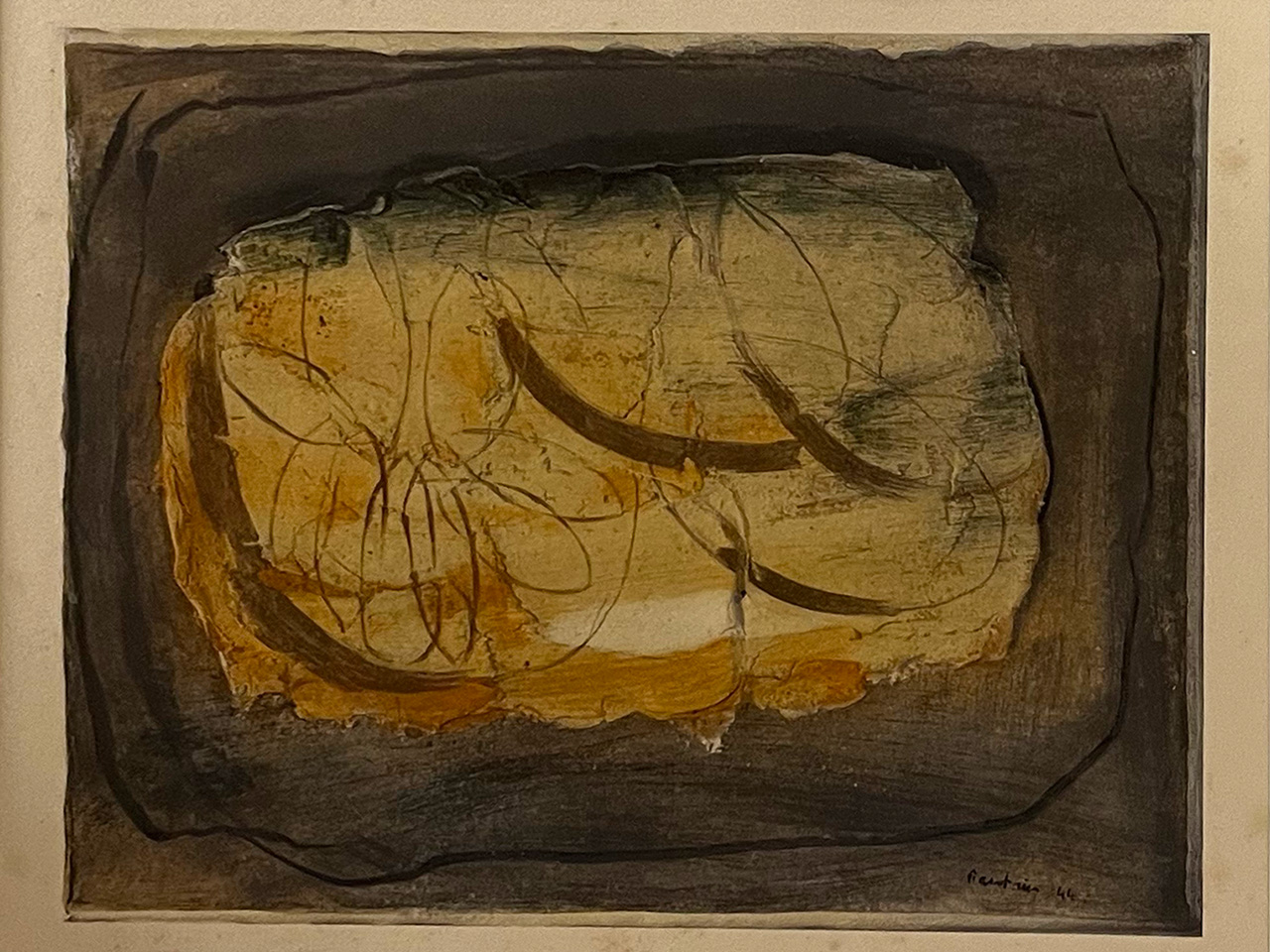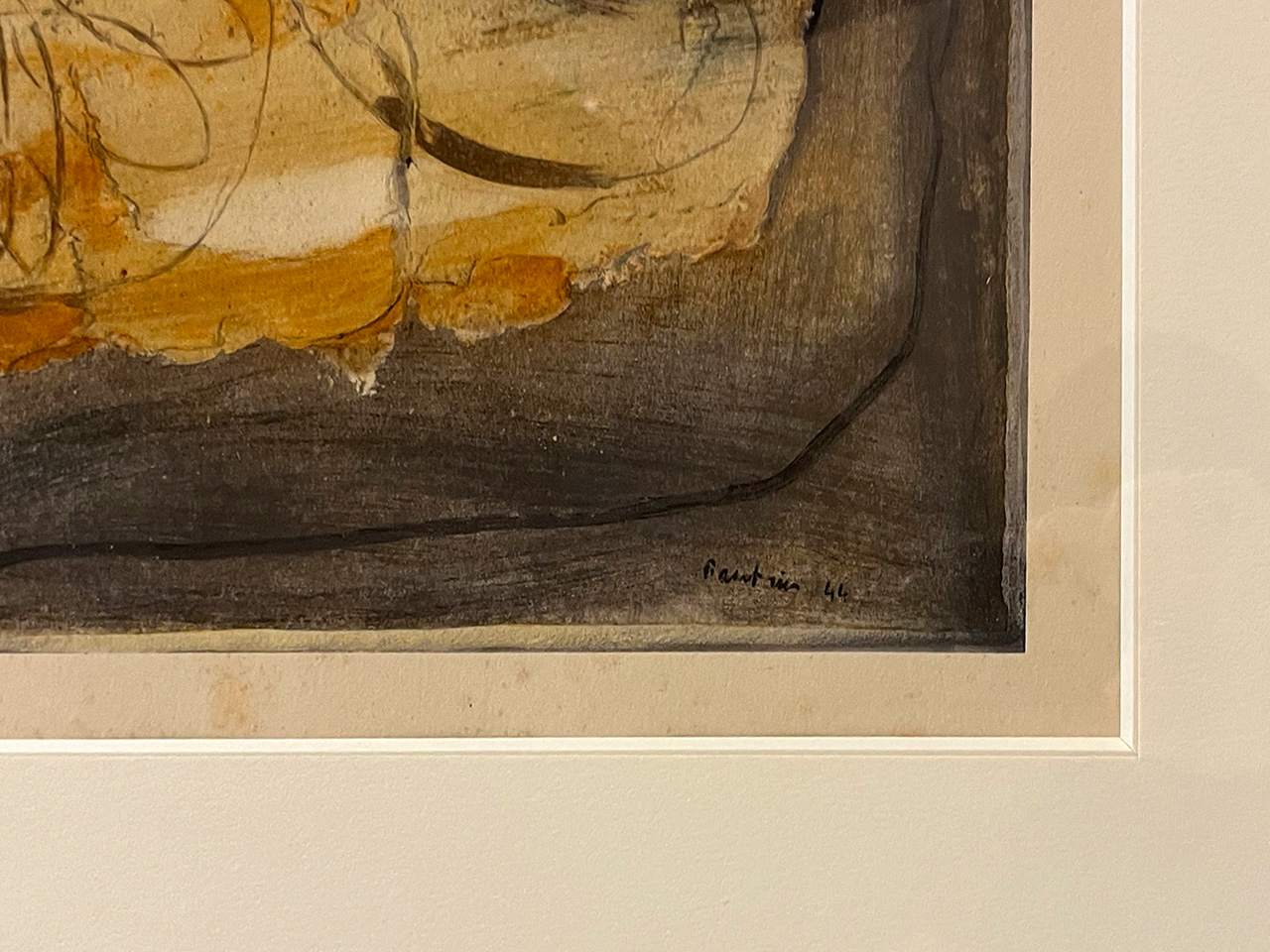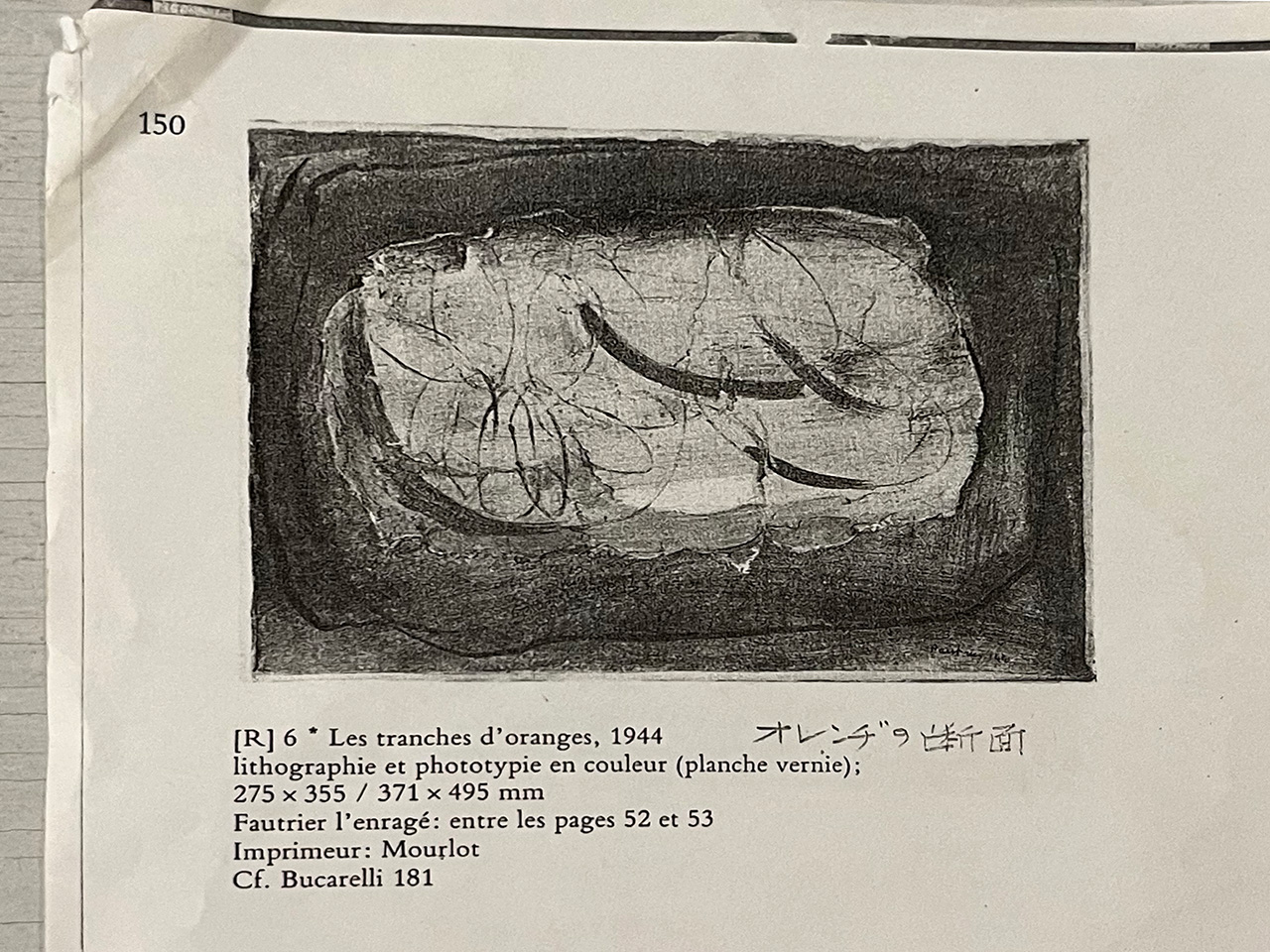ジャン・フォートリエ/Jean Fautrier
ジャン・フォートリエ(1898~1964)は、20世紀のフランスを代表する画家の一人です。
パリに生まれたフォートリエはロンドンで美術教育を受け、第一次世界大戦から復員後は、作家のアンドレ・マルロー(1901~1976)やジャン・ポーラン(1884~1968)らと親交を深めながら、パリを拠点に画家としての才能を磨いていきました。写実的な絵から始まったフォートリエの作風は、次第に暗い色調の抽象画へと移行し、伝統的な油彩からも距離を置くようになります。1930年代は一時的に画業から遠ざかるものの、第二次世界大戦が勃発すると再びパリにアトリエを構え、レジスタンスにも参加しました。しかし、1943年にはドイツ軍の捜査から逃れるために、友人の手配でパリ近郊へと身を寄せることとなります。この戦時下の、精神的に圧迫された環境で描かれた連作【人質】は、戦後に発表されるやいなや大きな反響を呼びました。厚く塗り重ねられた焼き物のような絵肌と激しく歪んだ抽象的な人物造形により、戦争の犠牲者たちの苦悶を強烈なまでに突きつける本作は、間違いなくフォートリエにとって一つの到達点でした。以降、分厚い絵の具の層と独特の質感を特徴とした、美しくも緊張感のある作品を次々と手がけ、1960年のヴェネツィア・ビエンナーレでは大賞を受賞するなど国内外で高い評価を得ていきました。
晩年のフォートリエは抵抗を示しているものの、アンフォルメルの先駆けとして位置づけられている点も、いかに彼の作品が斬新で、戦後美術の動向に先鞭をつけたのかを示唆しています。戦前の日本においても、文献にその名前が挙がるほど注目を集めていたフォートリエですが、1956年に開催された「世界・今日の美術展」にて、アンフォルメルの作家の一人として紹介されたことでさらにその存在感を強め、1959年に来日した際には南画廊の個展で大成功を収めるなど、日本の美術界に大きなインパクトや影響を与えました。1961年には第6回日本国際美術展で外務大臣賞を受賞しています。日本では、大原美術館やアーティゾン美術館などに作品が収蔵されています。
先述の通り、フォートリエはフランスを代表する画家であるとともに、戦後美術という、より広い文脈を語るうえでも欠くべからざる作家と言えるでしょう。
Jean Fautrier (1898-1964) is one of the representative painters of 20th-century France.
Born in Paris, Fautrier learned his artistic education in London. After serving in World War I, he honed his talents as a painter based in Paris, deepening his friendships with writers such as André Malraux (1901-1976) and Jean Paulhan (1884-1968). His style, which began with realistic paintings, gradually transitioned to abstract paintings with dark tones, distancing himself from traditional oil painting. Although he briefly stepped away from his artistic career in the 1930s, he established a studio in Paris again when World War II broke out and also participated in the Resistance. However, in 1943, to evade investigation by the German army, he sought refuge in the outskirts of Paris through arrangements made by friends. The series “Hostages” created in this mentally oppressive wartime environment, immediately garnered significant attention upon its post-war release. With its thickly layered, pottery-like texture and intensely distorted abstract figures, this work forcefully confronts the suffering of war victims, undoubtedly marking a milestone for Fautrier. Subsequently, he continued to produce works characterized by thick layers of paint and a unique texture, receiving high acclaim domestically and internationally, culminating in winning the Grand Prize at the 1960 Venice Biennale.
In his later years, Fortrier, while showing resistance, is positioned as a pioneer of Art Informel, suggesting how innovative his work was and how he paved the way for a trend in post-war art. Even before the war, Fautrier had garnered attention in Japan to the extent that his name appeared in literature. However, his presence was further strengthened when he was introduced as one of the artists of Art Informel at the “World Today’s Art Exhibition” held in 1956, and his impact and influence in the Japanese art world grew significantly when he achieved great success with a solo exhibition at the Minami Gallery during his visit to Japan in 1959. In 1961, he received the Foreign Minister’s Award at the 6th Japan International Art Exhibition. In Japan, his works are housed in institutions such as the Ohara Museum of Art and the Artizon Museum. As mentioned earlier, Fautrier can be considered not only a representative painter of France but also an indispensable artist when discussing the broader context of post-war art.




作品名:Les tranches d’oranges
サイズ:27.5×35.5cm(1944年 Orijinal Multiple)
価格:SOLD OUT
価格は税抜き表示です

